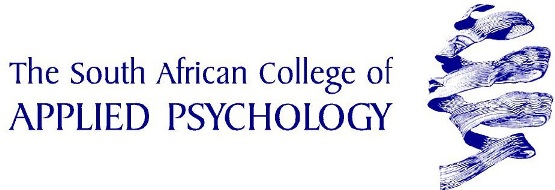Prerequisite: Counselling Skills I
Purpose of module:
This module introduces a range of counselling theories, methods and issues for counselling. It provides students with a critical understanding of the main counselling approaches, common issues in counselling and the need to consider the impact of the social, cultural and gender contexts in counselling interactions. Students are expected to integrate theory skills and apply an ethical approach to a range of clients in workplace-relevant contexts. This module links with Counselling Skills 1 & 2 to provide a broad knowledge and skills base for the specialised counselling modules in the course.
Module Content:
This module introduces a basic framework for understanding the significant contributions of major psychotherapeutic theories and methods to the counselling interaction. The student learns to develop a critical understanding and appreciation of the main approaches used in counselling and the why and how of their use. The development of a solid ethical framework based on a comprehensive understanding and appreciation of counselling theory and practice is central to this module. This module and Methods of Counselling 2 provide an intensive and thorough foundation in counselling theory and practice.
- Counselling as part of the therapeutic process: client change in the therapeutic process of counselling, the clients/counsellor relationship in the therapeutic process of counselling, commonly confronted issues/difficulties in the therapeutic process of counselling, client resistance and defensive behaviour, “transference” and “counter transference”
- Approaches to counselling: systems theory-based approaches, behavioural counselling, approaches, cognitive-based approaches, psychodynamic approaches, humanistic/ existential approaches, brief-term counselling approaches
- Useful techniques in counselling: relaxation techniques, guided imagery, visualisation, selection of techniques to match client needs
- Matching counselling approach to client needs: common presenting problems and approaches counselling intervention strategies, choosing the appropriate counselling method, using referrals appropriately
- Social context and the counselling relationship: cross-cultural issues in counselling, gender issues in counselling, the counsellor’s own socio-cultural and religious background, the client’s background and its relevance for counselling approach and methods
- Matching client needs to counselling approach of referral agency: range of services/approaches offered, social/cultural context of agency, qualifications and experience of agency staff, referral process, client follow-ups
- Integrity and ethics in client/counsellor relationships: confidentiality, recognising limits to counselling skills, appropriate counsellor behaviour in counselling relationship, professional boundaries and responsibilities, dealing with complaints from clients
- Creating and maintaining an appropriate context for counselling: the physical environment, dealing with emotional reactions to clients or client situations
Learning Outcomes
- Demonstrate and explain how counselling methods become a critical part of the therapeutic process
- Identify common issues/difficulties in the therapeutic process of Counselling
- Discuss and demonstrate counselling applications and the difficulties associated with each counselling approach
- Evaluate which counselling approach and specific technique(s) may meet the needs of individual clients
- Determine counselling approach to match client needs
- Formulate an awareness and a personal philosophy towards counsellingEstablish an appropriate context for counselling


No comments:
Post a Comment
Note: Only a member of this blog may post a comment.